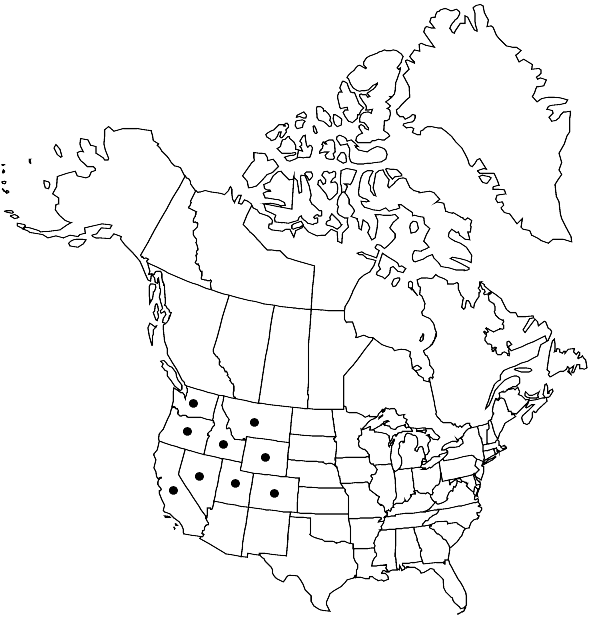Difference between revisions of "Schistidium occidentale"
Advances Cladist. 1: 143. 1981,.
FNA>Volume Importer |
FNA>Volume Importer |
Revision as of 21:52, 16 December 2019
Plants in open to occasionally compact tufts or mats, olivaceous, often (red-)brown or nearly black. Stems 1–6 cm, sometimes denuded of leaves at base, central strand absent. Leaves usually curved to falcate, sometimes falcate-secund or erect when dry, linear-lanceolate to ovate-lanceolate, concave proximally, weakly keeled or concave distally, 1.4–4(–6) mm, 1-stratose with a few 2-stratose striae or patches distally; margins plane or somewhat erect, rarely weakly recurved, smooth, 2-stratose; apices rounded or acute, usually ending in a fleshy, multistratose apiculus; costa percurrent, rarely short-excurrent, smooth; basal marginal cells quadrate or short-rectangular; distal cells quadrate or rounded, often angular, 6–11 µm wide, smooth, sometimes weakly bulging-mammillose, weakly sinuose. Sexual condition autoicous. Capsule reddish brown, ovoid, cupulate, or short-cylindric, 1.3–2 mm; exothecial cells mostly short-elongate or isodiametric, usually irregularly angular, usually thin-walled, sometimes trigonous; rim darker colored than capsule wall, often red; stomata absent; peristome patent, 350–550 µm, red or orange-red, finely papillose, entire or perforated. Spores 9–12 µm, smooth.
Phenology: Capsules mature late spring to early summer.
Habitat: Wet or dry rocks, often along intermittent watercourses
Elevation: high elevations (2000-3500 m)
Distribution

Calif., Colo., Idaho, Mont., Oreg., Nev., Utah, Wash., Wyo.
Discussion
See comments under 6. Schistidium cinclidodonteum.
Selected References
None.